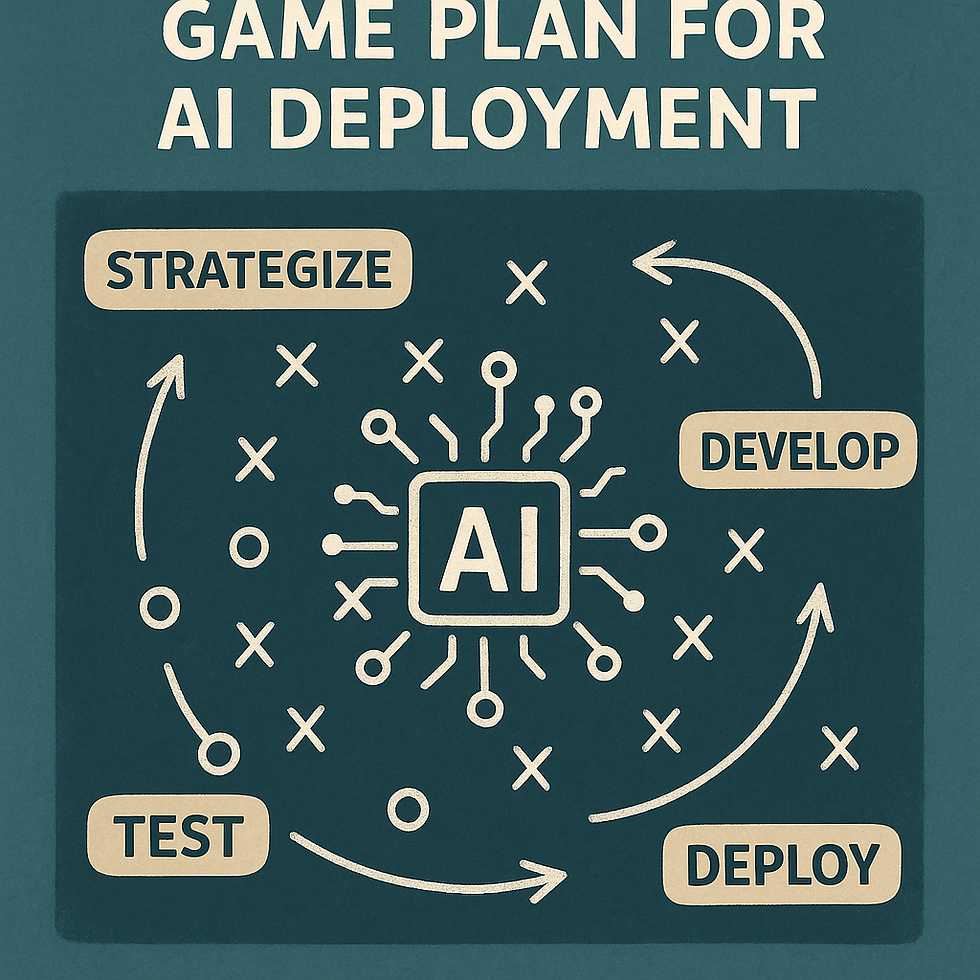Generative AI: The Next Big Thing — If Your Data’s Ready
- Todd Jones
- Sep 20
- 4 min read

Generative AI is no longer “maybe the next frontier” — it is the frontier. From drafting marketing copy and generating product images, to automating code, analyzing documents, improving customer service, and more — its potential is huge. Yet many organizations are struggling to turn that potential into reality. One of the biggest blockers? Their data.
While AI innovations are moving fast, data readiness is not keeping pace. Without good data — clean, well-governed, labeled, accessible — AI systems become brittle, biased, or useless. Below, we cover how generative AI can help, but also what the recent research says about how data (or lack thereof) is holding businesses back.
What Generative AI Can Do
Before we dive into barriers, here’s a quick snapshot of what generative AI enables:
Creativity & Content: Auto-generation of written content, images, video, voice. Helps with scaling content production, personalizing user experiences.
Automation & Efficiency: Drafting reports, summarizing documents, generating code snippets — reducing repetitive work, freeing up people for higher-value tasks.
Decision Support: Analyzing large corpora to find patterns, trends; extracting insights; responding to queries.
Innovation: Prototyping ideas quickly, experimenting with design or product variations; simulating what-if scenarios.
All this can translate into cost savings, new products/services, better customer experiences, and competitive advantage.
What Will Hold You Back: Old School Data Problems
However, many organizations are finding that old problems with data still loom large, especially when trying to adopt generative AI. Here are what recent studies show, and how often data issues come up.
What Recent Research & Surveys Say
Finding | Key Take-away |
MIT Technology Review / Snowflake – “Data Strategies for AI Leaders” | 78% of global companies are not “very ready” to support generative AI deployment, mostly because their data strategies are weak. |
Informatica – “CDO Insights 2025” | Data leaders cite poor quality, fragmented sources, and inconsistent definitions as barriers to AI readiness. |
Precisely – Global Research | Lack of data quality and governance is a top obstacle to using AI effectively. |
A-Team Insight | Data complexity and poor quality hinder both AI adoption and broader modernization. |
Case Study: How AgentixAI Helped a Small Law Firm
A regional law firm with fewer than 30 attorneys wanted to explore how AI could help them operate more efficiently and make better business decisions. Their challenge wasn’t enthusiasm — it was data chaos.
The Problem:
Client information lived in multiple systems (emails, spreadsheets, case management tools).
Historical billing data was inconsistent and incomplete.
Attorneys often had to manually pull information before making client recommendations or billing decisions.
Leadership lacked a clear picture of profitability per case, practice area, or client type.
Step 1: Building a Clean Data Process AgentixAI worked with the firm to create a process for capturing and organizing data. This included setting rules for how client information, case notes, and billing details were entered into their systems. A structured template ensured new data was consistent, searchable, and ready for analysis.
Step 2: Cleaning & Preparing Historical Data Next, AgentixAI helped clean and unify 10+ years of historical records. Duplicate clients were merged, billing codes were standardized, and missing data points were identified and corrected. This transformed thousands of fragmented records into a usable, reliable dataset.
Step 3: Enabling Real-World Decisions With clean data, the firm was able to:
Identify their most profitable practice areas (family law cases were more profitable than expected, while some corporate contracts were running at a loss).
Spot client churn risks by analyzing historical engagement patterns.
Automate first-draft client letters and case summaries with generative AI, saving attorneys hours per week.
Forecast revenue by client type and practice area, improving budgeting and staffing decisions.
The Outcome: Within six months, the firm reported:
A 15% increase in billable utilization due to reduced time spent on manual data prep.
Staff-time Recovery of 30% saving big $$ every week created provided an immediate ROI of less than 3 months
A clearer view of revenue and profitability, driving smarter strategic decisions.
Higher client satisfaction because attorneys spent more time advising and less time digging through files.
Why Data Readiness Matters (Beyond Just “Clean Data”)
As the law firm’s story shows, data readiness isn’t just about accuracy — it’s about enabling real decisions and efficiency. It includes:
Quality & Consistency
Standardized Formats
Governance & Security
Access & Infrastructure
Integration of Historical Data
Conclusion: How AgentixAI Can Help
Generative AI is powerful — but without AI-ready data, it can’t deliver its full value. Many organizations remain stuck in old systems and fragmented records, which creates risks, inefficiencies, and wasted investment.
At AgentixAI, we help organizations get their data house in order first:
Creating repeatable processes for collecting and structuring data.
Cleaning and preparing historical datasets so they’re usable today.
Building governance frameworks so AI outputs can be trusted.
Then applying generative AI tools to deliver insights, automation, and client value.
Whether you’re a small law firm trying to understand profitability, a healthcare provider improving patient outcomes, or a manufacturer optimizing supply chains — the same principle applies: AI can only be as smart as the data you feed it.
AgentixAI can help you make your data ready, your systems smarter, and your people more effective.
.png)




Comments